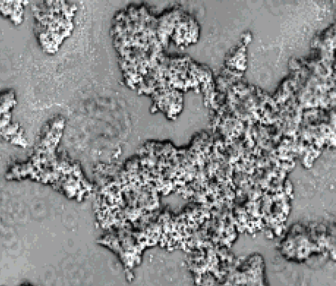Environmental Detection of Heavy Metals
The introduction of heavy metals into the environment has occurred in tandem with the emergence of the tools of modern society including automobiles, industrial activities, and the burning of coal. Consequently, the detection of these metals has attained significant prominence within the scientific community and the public consciousness as a result of their varied deleterious biological activities. These concerns have been furthered by the discovery that aquatic organisms convert elemental mercury to methylmercury, which subsequently concentrates through the food chain in the tissues of fish and marine mammals. Unquestionably, the development of facile and efficient methodologies for the detection of heavy metals in a wide range of settings is paramount in the effort to minimize incidences of mortality attributable to heavy metal toxicity.
A plethora of indicators are known to detect metal ions through the intramolecular modulation of a pendant chromophore. While effective for toxic metal analysis in laboratory environments, few of these probes have proven suitable for screening within modern industrial settings. While the design of colorimetric-ligation has been critically-evaluated by many reseach groups, the predominant theme within metal ion sensing relies on solution based chemistry. Few efforts have correlated metal ion sensing with material synthesis (i.e., crystallization, precipitation or polymerization).
Recent advances in the study of colorimetric ligands suggest that a viable metal indicator offers: 1) the appropriate direction of metal-mediated modulation, 2) a high degree of sensitivity, and 3) a defined metal selectivity. We have demonstrated that correlation of ligation-induced colorimetric response with precipitation provides an effective vector for metal ion analysis. In this scenario, amplification of a colorimetric response through precipitation provided a practical screen for mercuric ion.
More recently, we have reported that the appendage of a colorimetric moiety is unnecessary for the analysis of thiophilic metals in conjunction with Dr. James La Clair (Xenobe Research Institute). Indeed, we have prepared a ligand capable of detecting thiophilic heavy metals (e.g., Hg2+, Pb2+ and Cd2+) in a microcapillary format at subnanomolar concentrations, almost 10,000 times less than the limit established by the US Environmental Protection Agency (EPA). Our assay utilizes a fluorescent dye-doped crystalline assay that offers convincing metal selection and provides detection comparable to conventional solution-based ligands used for the spectrofluorometric analysis of thiophilic heavy metal ions. While comparable in analytical performance to known methodologies, the formation of a crystalline analytes provides for signal amplification, and consequently, a powerful platform whose analysis is directly amenable to high-throughput video capture systems. This procedure has been tested in a variety of scenarios and shows good performance using readily available equipment, including a commercially available USB CCD camera designed to serve as a child's toy.
Our current efforts in this area include the further development of our precipitation assay into a format amenable to the high throughput screening of biological samples including fish tissue, and the application of our heavy metal sensor in biology and material science.

